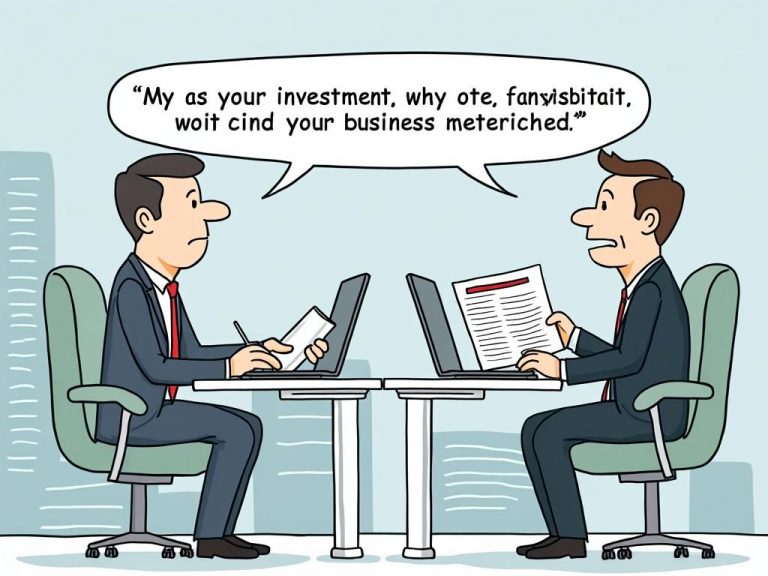
High-Risk, High-Reward: Greek Turnaround Stocks and Bonds
Reading time: 15 minutes
Table of Contents
- Introduction
- The Greek Economic Landscape
- Analyzing Greek Stocks
- Greek Government Bonds: A Risky Proposition?
- The Role of Foreign Investment
- Regulatory Environment and Reforms
- Comparison with Other European Markets
- Potential Risks and Challenges
- Investment Strategies for Greek Assets
- Conclusion
- FAQs
1. Introduction
In the realm of international finance, few markets have experienced as tumultuous a journey as Greece. Once the poster child of the European debt crisis, Greece has embarked on a path of economic recovery that has caught the attention of savvy investors worldwide. This comprehensive analysis delves into the high-risk, high-reward world of Greek turnaround stocks and bonds, offering insights into the potential opportunities and pitfalls that await those bold enough to venture into this complex market.
As we navigate through the intricacies of Greek financial instruments, it’s crucial to approach the subject with a nuanced understanding of the country’s economic history, current state, and future prospects. The Greek market presents a unique case study in economic resilience and the power of reforms to drive financial turnaround.
2. The Greek Economic Landscape
To fully appreciate the investment potential in Greek assets, one must first understand the economic context from which these opportunities arise. Greece’s economy has undergone significant transformations since the height of its sovereign debt crisis in 2015.
2.1 Historical Context
The Greek debt crisis, which peaked between 2009 and 2015, led to severe austerity measures, multiple bailouts from international creditors, and a near-exit from the Eurozone. This period saw Greek GDP contract by over 25%, unemployment soar to record levels, and investor confidence plummet.
2.2 Recent Economic Indicators
Fast forward to the present, and the picture has changed dramatically:
– GDP Growth: Greece has returned to positive growth, with projections for 2023 hovering around 2.2%.
– Unemployment: While still high by European standards, unemployment has fallen from a peak of 27.5% in 2013 to approximately 11% in 2023.
– Debt-to-GDP Ratio: Although still elevated, this crucial metric has stabilized and is on a downward trajectory.
– Foreign Direct Investment (FDI): There has been a notable increase in FDI, signaling renewed international confidence in the Greek economy.
These improvements have not gone unnoticed by the international financial community, leading to increased interest in Greek financial instruments.
3. Analyzing Greek Stocks
The Athens Stock Exchange (ASE) has become a focal point for investors seeking exposure to Greece’s economic recovery. Several sectors stand out as particularly promising:
3.1 Banking Sector
Greek banks, once the epicenter of the country’s financial woes, have undergone significant restructuring and recapitalization. Major players like Alpha Bank, Eurobank, and National Bank of Greece have shown remarkable resilience, cleaning up their balance sheets and improving their capital adequacy ratios. The sector’s recovery is closely tied to the overall health of the Greek economy, making bank stocks a leveraged play on Greece’s continued turnaround.
3.2 Tourism and Hospitality
Tourism remains a cornerstone of the Greek economy, accounting for approximately 20% of GDP. Companies in this sector, including hotel chains, airlines, and cruise operators, have seen robust growth as international travel rebounds post-pandemic. The Greek government’s focus on extending the tourist season and attracting high-end visitors further bolsters the prospects of this sector.
3.3 Energy and Renewables
Greece’s commitment to green energy transition has opened up significant opportunities in the renewable energy sector. Companies involved in solar, wind, and hydroelectric power generation are attracting investor attention. The country’s ambitious targets for renewable energy adoption provide a strong tailwind for stocks in this space.
4. Greek Government Bonds: A Risky Proposition?
Greek government bonds, once synonymous with extreme risk, have undergone a remarkable transformation in recent years. The yield on Greek 10-year government bonds, which peaked at over 30% during the crisis, has fallen dramatically, often trading below 4% in recent times. This compression in yields reflects improved investor confidence and Greece’s return to international bond markets.
4.1 Yield Analysis
While Greek bond yields have decreased significantly, they still offer a premium over other Eurozone countries. This yield premium represents both the residual risk associated with Greek debt and the potential for further yield compression as the country’s economic fundamentals continue to improve.
4.2 Credit Rating Improvements
Major credit rating agencies have progressively upgraded Greece’s sovereign debt rating. These upgrades reflect the country’s improved fiscal position, reduced political risk, and successful implementation of economic reforms. Further upgrades could lead to inclusion in major bond indices, potentially driving significant inflows into Greek bonds.
5. The Role of Foreign Investment
Foreign investment has played a crucial role in Greece’s economic recovery and continues to be a key driver of growth. The Greek government has implemented several measures to attract foreign capital, including:
- Streamlined investment procedures
- Tax incentives for strategic investments
- Privatization of state assets
- The golden visa greece program, which offers residency permits to non-EU nationals making significant investments in Greek real estate
These initiatives have led to increased foreign direct investment across various sectors, from real estate to technology. The influx of foreign capital not only provides immediate economic benefits but also signals long-term confidence in Greece’s economic prospects.
6. Regulatory Environment and Reforms
The regulatory landscape in Greece has undergone significant changes aimed at improving the business environment and attracting investment. Key reforms include:
6.1 Labor Market Reforms
Greece has implemented measures to increase labor market flexibility, including changes to collective bargaining agreements and minimum wage regulations. These reforms aim to boost competitiveness and reduce unemployment.
6.2 Digital Transformation
The Greek government has prioritized digital transformation, streamlining bureaucratic processes and improving the ease of doing business. This includes the digitization of public services and the implementation of e-governance initiatives.
6.3 Tax Reforms
Efforts to simplify the tax system and reduce the tax burden on businesses and individuals have been ongoing. These reforms aim to stimulate economic activity and improve tax compliance.
7. Comparison with Other European Markets
When evaluating Greek assets, it’s essential to consider how they compare to other European markets. While Greece still presents higher risk compared to core Eurozone economies like Germany or France, it offers potentially higher returns. Some key comparisons include:
- Equity Valuations: Greek stocks often trade at lower valuations compared to their European peers, potentially offering greater upside.
- Bond Yields: Greek government bonds offer higher yields compared to other Eurozone countries, reflecting both higher risk and potential for capital appreciation.
- Economic Growth: Greece’s GDP growth projections often exceed those of more mature European economies, offering exposure to a higher growth environment.
8. Potential Risks and Challenges
While the Greek turnaround story is compelling, investors must be aware of the risks and challenges that remain:
8.1 Political Risk
Greece’s political landscape remains volatile, with the potential for policy shifts that could impact economic reforms and investor sentiment.
8.2 External Shocks
As a small, open economy, Greece remains vulnerable to external shocks, including global economic downturns or geopolitical tensions.
8.3 Demographic Challenges
Greece faces demographic challenges, including an aging population and brain drain, which could impact long-term economic growth prospects.
8.4 Non-Performing Loans
While significantly reduced, the banking sector still grapples with a higher-than-average level of non-performing loans, which could pose challenges in an economic downturn.
9. Investment Strategies for Greek Assets
For investors considering exposure to Greek assets, several strategies can be employed to balance risk and potential reward:
9.1 Diversification
Given the higher risk profile of Greek assets, diversification is crucial. This could involve investing across multiple sectors within Greece or balancing Greek investments with more stable European or global assets.
9.2 Long-Term Perspective
The Greek turnaround story is likely to unfold over several years. Adopting a long-term investment horizon can help weather short-term volatility and capitalize on the country’s ongoing economic improvements.
9.3 Active Management
The Greek market’s complexity and evolving nature may benefit from active management approaches. This could involve regularly reassessing positions based on economic indicators, policy changes, and company-specific developments.
9.4 Hedging Strategies
Investors can consider hedging strategies to mitigate currency risk or broader market volatility. This might include using currency forwards or options to protect against fluctuations in the Euro.
10. Conclusion
The Greek financial market presents a unique opportunity for investors willing to navigate its complexities. The country’s economic turnaround, while still in progress, has created potential for significant returns in both the equity and fixed income markets. However, these opportunities come with substantial risks that require careful consideration and management.
As Greece continues its journey of economic reform and modernization, the investment landscape is likely to evolve. Savvy investors who can balance the risks with the potential rewards may find Greek assets to be a valuable addition to their portfolios. The key lies in thorough research, ongoing monitoring of economic and political developments, and a strategic approach to asset allocation.
Ultimately, Greek turnaround stocks and bonds represent a high-risk, high-reward proposition that embodies the complexities and opportunities of emerging market investments within a European context. For those with the appetite for risk and the patience to see the turnaround story unfold, Greek assets offer a compelling narrative of economic resilience and potential financial reward.
FAQs
-
Q: What are the main risks associated with investing in Greek stocks?
A: The main risks include political instability, potential economic setbacks, exposure to external shocks, and the overall higher volatility of the Greek market compared to more developed European economies.
-
Q: How have Greek government bonds performed in recent years?
A: Greek government bonds have seen significant yield compression in recent years, reflecting improved investor confidence. However, they still offer higher yields compared to other Eurozone countries, indicating residual risk.
-
Q: What sectors in Greece offer the most promising investment opportunities?
A: Key sectors include banking, tourism and hospitality, renewable energy, and technology. These sectors are benefiting from economic reforms, increased foreign investment, and Greece’s strategic priorities.
-
Q: How does the Greek stock market compare to other European markets in terms of valuation?
A: Greek stocks often trade at lower valuations compared to their European peers, potentially offering greater upside. However, this lower valuation also reflects the higher perceived risk of the Greek market.
-
Q: What role does foreign investment play in Greece’s economic recovery?
A: Foreign investment is crucial to Greece’s recovery, providing capital, expertise, and confidence in the economy. The Greek government has implemented various measures, including the golden visa program and tax incentives, to attract foreign capital across multiple sectors.

Article reviewed by August Schmidt, Alternative Investments Expert | Diversifying Portfolios with Unique Assets, on March 10, 2025








